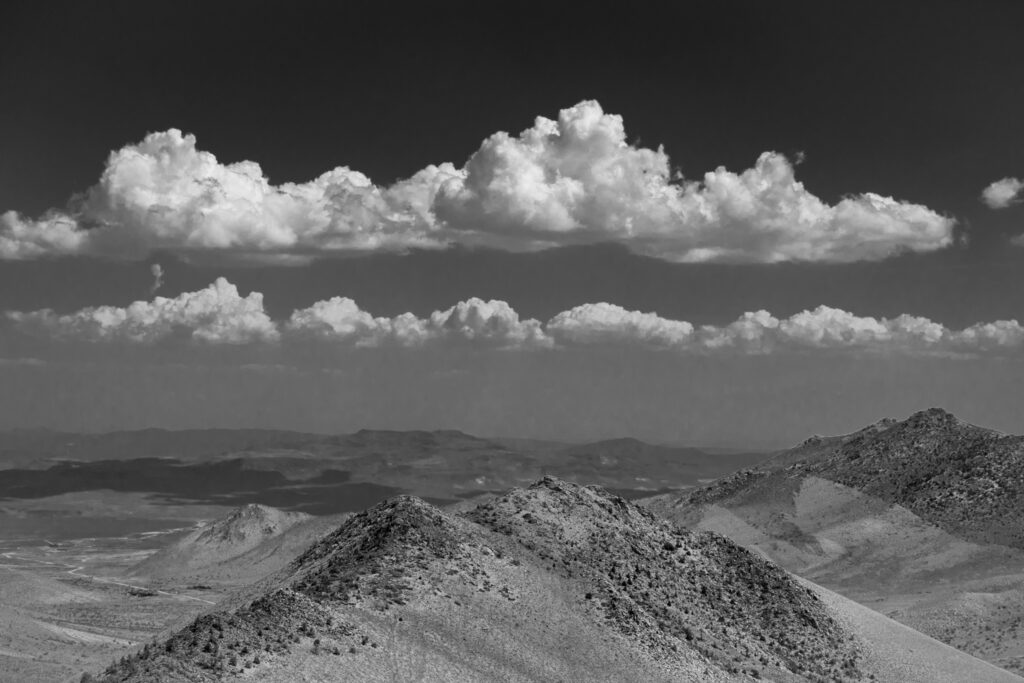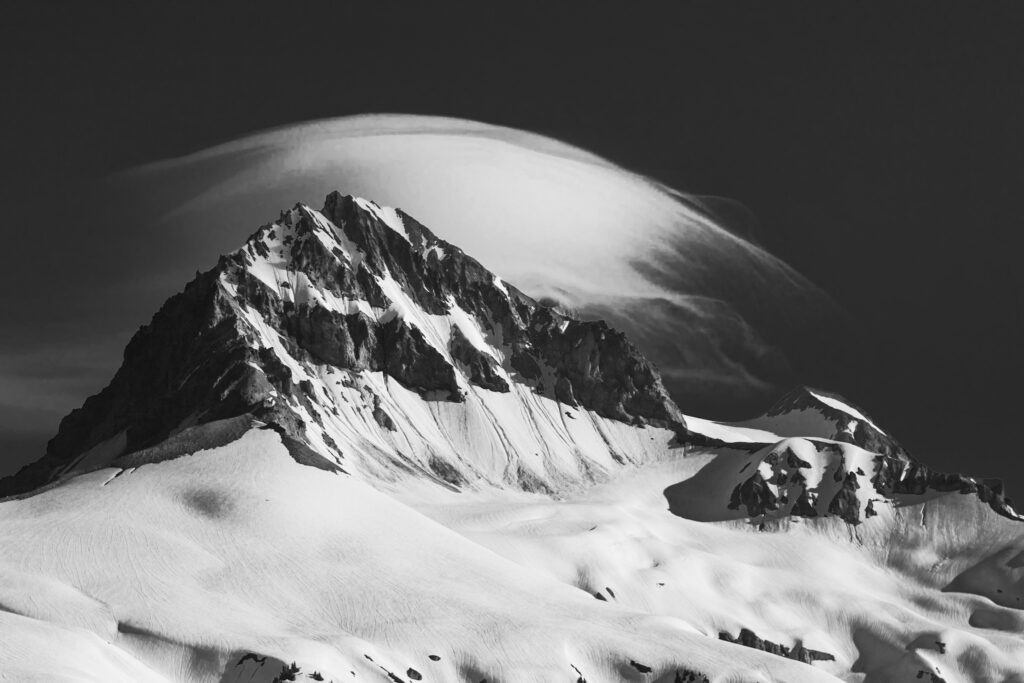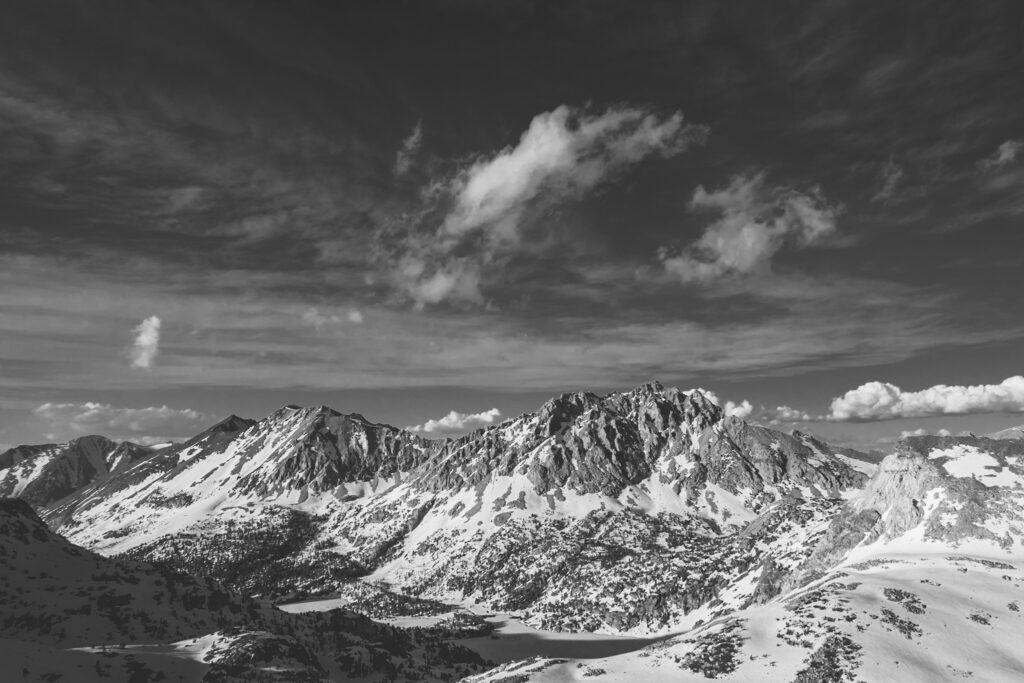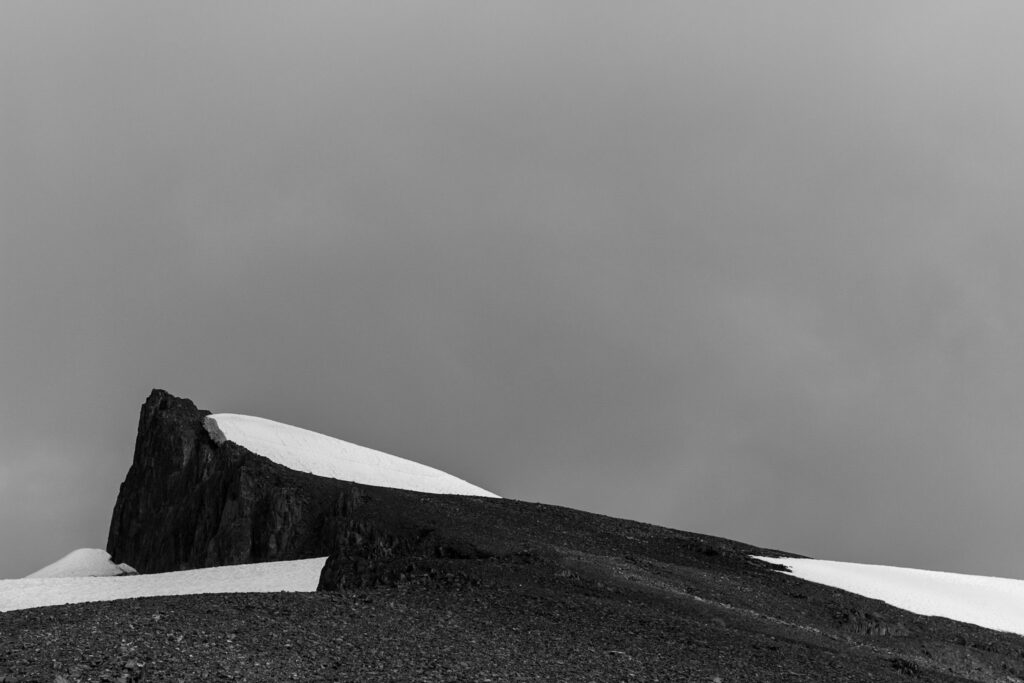Perspectives and Reflections on Racism in the Outdoors

It wasn’t very hard to spend pretty much my entire upbringing as a White middle-class British Columbian thinking that racism wasn’t relevant to me. But it’s become clearly egregious to continue thinking that at this point.
Almost all of my political involvement over my lifetime has been on topics related to parks and outdoor recreation. I also dedicate a huge chunk of my time to those activities and the ones that are adjacent to them, like writing this blog. So I started to ask myself whether things so seemingly innocent as the hobbies of camping or hiking played a role in the ongoing discrimination against North American People of Colour. And if so, how was I involved and what could I do about it?
Over the last couple of weeks, I leapt into what I realized was a huge body of literature on race-related issues in parks and outdoor recreation. And as I kept reading, taking in new information and reflecting on myself, a picture started to emerge of some serious problems that were ingrained in my beloved hobbies. They were problems that I realized I should have been aware of, but wasn’t.
And that brings me to this essay, mostly a learning exercise for myself, but hopefully for some of you, too. While I’ll just scratch the surface of this topic that has been covered by better researchers and writers than me, hopefully I can bring this knowledge to an audience that wouldn’t have otherwise found it.
Definition of Racism
Before we get into it, I want to make sure we’re all on the same page about what I mean when I say racism. I’ve used the word a few times already in the introduction to this essay, but I want to get the definition sorted before I go any further. Starting with Merriam-Webster:
Racism
1: a belief that race is the primary determinant of human traits and capacities and that racial differences produce an inherent superiority of a particular race
2a: a doctrine or political program based on the assumption of racism and designed to execute its principles
2b: a political or social system founded on racism
3: racial prejudice or discrimination
Most of us might think of definitions 1 and 3 most of the time when we hear the word racism, but this essay is going to focus on definitions 2a and 2b. I’m going to explore how many of the systems that exist within outdoor recreation and public parks were created to benefit White people, and how they continue to favour White people over others.
It’s true that overt race-based discrimination and racially-charged hatred is thankfully mostly gone from our outdoor spaces (although not entirely, as we’ll see later). But it’s wrong to think that that means there’s no racism outdoors, because signs of systemic racism are everywhere.
Scope of this Essay
The topics in this essay will switch back and forth between the Canadian and American contexts. I was raised and continue to live in Canada, but a lot of my experience in the outdoors has been in America. In addition, there’s been a lot more data collection about race in the outdoors in America than in Canada. In some sections, I’ll focus on issues specific to British Columbia because they’re what I know most about.
Throughout this whole thing, I’ll be reflecting on my own role in the various racist systems in outdoor recreation, because this piece is intended to be an introspective exercise for me through which my readers might learn something too.
Benefits of Parks
We should start by establishing why ending racism in the outdoors is such a critical goal. Research across many fields of science has shown that park use can:
- Mitigate the effects of sedentary lifestyles like obesity, heart disease, and certain types of cancer;
- Improve mental health by reducing stress;
- Improve social ties in a world where we we struggle to find connection; and
- Provide ecological benefits from experiencing improved air quality and reduced noise.
Clearly, parks can bring so many benefits to our health and well-being. That’s why we need to strive to ensure that they’re accessible to everyone.
So are they accessible to everyone?
Stats on Race in the Outdoors
By comparing racial data from the US census and surveys of park users shown in the table below, we can see how different groups are over- and underrepresented in outdoor spaces.
| Race | US Population | US Nat’l Park Visitors | PCT Hikers | AT Hikers |
| Asian | 5.9% | 2% | 2.4% | 1.4% |
| Black | 13.4% | 1% | 0.2% | 0.0% |
| Indigenous1 | 1.5% | <2% | 0.6% | 0.8% |
| Two+ Races | 2.7% | – | 2.4% | 0.8% |
| Latino | 16.5% | – | 1.8% | 2.0% |
| White | 60.4% | 95% | 92.4% | 95.0% |
What these statistics make very clear is that the wilderness in America is overwhelmingly White. And because I don’t have any data to say otherwise, I can only assume that the picture is similar in Canada, and my experience of being outdoors in British Columbia suggests that it is.
Racism or just Cultural Differences?
Now, when some people see statistics like those in the table above, they react in defense of their hobbies. A common claim is that outdoor spaces are welcoming to anyone regardless of race, and these numbers are just a reflection of cultural differences. To some people, the whiteness of parks isn’t because of racism, just an innocent result of racial differences in hobbies in a free county.
In the next section of this essay, I hope to show that these differences between the racial makeup of the American population and visitors to parks is the result of more than just cultural preferences. It has a lot to do with racist systems. But I do think it’s important that we recognize that the people that react to these stats defensively aren’t completely wrong. The choice of a person’s hobbies undoubtedly has a cultural component, and it shouldn’t be our goal to erase cultural differences in a diverse place like North America.
But what we need to recognize, and what I hope to show you throughout this essay, is that there are a ton of harmful discriminatory barriers that keep People of Colour out of outdoor spaces. It’s wrong to assume those barriers don’t exist, and it’s especially wrong to do so based on my experience as a White dude.
Given all that, let’s explore the reasons behind those racial differences.
Theories on Racial Barriers to the Outdoors
The social science literature has different theoretical perspectives on why the outdoors is so White. They all bring valuable and unique perspective, but each of them has weaknesses too.
The Marginality Hypothesis says that People of Colour visit the outdoors less because they have less socioeconomic resources than White people. That is, they generally have less money, less access to transportation, and live in worse neighbourhoods than White people, all of which are important determinants for visiting parks. This hypothesis is valuable because it addresses the role of historical discrimination, and recognizes in our discussion of the outdoors the broader societal injustices faced by People of Colour. However, it’s unclear how this hypothesis applies to affluent People of Colour or poor White people. Also, it doesn’t explain observed cultural differences in style of recreation (which I’ll explain in the next section) by people that do visit.
The Subcultural Hypothesis suggests that differences in park and trail visitation statistics reflect cultural differences in values and lifestyles independent of socioeconomic factors. The strength of this hypothesis is that it recognizes the cultural diversity in North America and how that plays a role in peoples’ preferences. Its weaknesses are that the these cultural preferences are hard to measure, and it doesn’t account for diversity within ethnic groups.
The Discrimination Hypothesis suggests that People of Colour visit parks less because of perceived, actual, or institutional discrimination. This hypothesis is valuable because it draws attention to the present-day discrimination faced by People of Colour despite the end of race-based policies in public parks. The main weakness of this hypothesis lies in the lack of research on the topic, because observing and measuring perceived or institutional discrimination is so hard.

Research and Reflection on Race in the Outdoors
Now that we have a good theoretical overview of the different ways that race can shape the outdoor experience, I want to share some specific examples of research on these topics and offer my own reflections on how they relate to racist systems.
Race and Outdoor Recreation Style
In addition to the stats I’ve already shown on the presence of different racial groups in outdoor spaces, a lot of research has been done on how these different racial groups use those outdoor spaces.
Race, Group Size, and Priorities
Research on the difference between White and Latino campers found that Latinos camp in larger groups, averaging 12 people per campsite. As a result, park management policies that limit camping group sizes are barriers to park visitation for Latino people, and People of Colour of other cultures that I often see out in extended family groups like South Asians and Filipinos. Here in British Columbia, almost all provincial camp sites are limited to a maximum of four adults. There’s usually only one “group site” per park that allows for larger groups. This policy serves the camping preferences of White people. In addition, because of COVID-19, group sites and group picnic shelters have been closed for the foreseeable future, and the long-standing policy of allowing families with 8 adults to book double sites has also been banned. It seems that restrictions imposed by the provincial parks during the current pandemic impact People of Colour more than they do White people.
In my experience, Asian people hike in larger groups — often as part of an extended family outing or an organized trip — than White people. Many land managers limit group size in parks on the basis of Leave No Trace principles, and in the interest of reducing noise in the backcountry. Many hikers, including myself, may think it’s obvious that peace and quiet in the outdoors are important. But research has shown that privacy and quiet in parks and the concept of “getting away” are largely White priorities. Conversely, People of Colour generally visit parks for the opportunities to socialize. Learning this has made me reflect on my memories of feeling frustrated by large groups on trails, realizing that that frustration is incompatible with diversity in hiking.
Race and Outdoor Activities
In general, the research shows that backcountry activities like camping and hiking are disproportionately liked by White people, whereas other activities like picnicking, organized sports, and strolling are rated more highly as park activities by People of Colour. When I look back on my own backpacking trips, I know I felt that passing through developed, crowded park areas was an unwanted intrusion on my wilderness-based experience. But it’s important for me to understand now that developed park spaces are essential to ensure that people of all races can enjoy our beautiful public lands.
Race and Discrimination in the Outdoors
Hiking trails and public parks in general are more welcoming than the rest of North America. But it’s wrong to think that discrimination isn’t a significant barrier to participation in outdoor activities. In a survey, 7% of Americans agreed that national parks are uncomfortable for people of their race or gender. That same survey also suggests that that discomfort is preventing some people from visiting.
1 in 10 People of Colour in one study reported discrimination like verbal abuse, physical assault, or harassment from law enforcement officers in their use of a park. Another survey found that Black people were more than three times as likely as White people to say that park employees gave them poor service and that parks were uncomfortable places for people similar to themselves. In addition, Latino people were twice as likely as White people to be concerned about personal safety in national parks.
For many People of Colour, their experiences with discrimination in the outdoors may not necessarily be any different from their experiences in life. Even if a Person of Colour has never experienced racial discrimination in a given park, they’ve almost certainly experienced it at some point in their lives. The idea of heading outside to sleep in a tent is a much scarier prospect for someone who’s been made to feel unsafe in this world because of their race.
Race and Discrimination in Long-Distance Hiking
Because hiking is the main draw to parks for me any many of my readers, I wanted to take a closer look at discrimination on trail.
It’s impossible to thruhike the Appalachian Trail without walking past a confederate flag, an explicitly racist symbol. Enough said.
In a 2020 interview for Backpacker Radio, Will “Akuna” Robinson, the first known Black man to complete the Triple Crown of hiking told this story:
I’m hiking […] and this older gentleman kinda glances over his shoulder and says “what, is basketball and football not enough for you people anymore?” Holy shit, I can’t believe he just said that. […] And he tells me you know, how Black people historically are bad with directions and navigating, you know, we’re gunna get lost out in the woods and we’re gunna have search and rescue out here all the time which is gunna increase the cost of search and rescue. We don’t know how to behave in the backcountry, we’re gunna burn down the forest. And it goes on and on for five or six minutes.
In that same interview, Zach Davis, the host of the podcast, spoke about the many messages he gets from Black hikers that are hesitant to even head out to the Appalachian Trail because of the racism they expect to receive while out there.
I could go on putting together stories like this. But I think the anecdotes I’ve given are enough to show that while trails are generally welcoming places, the real and perceived racial discrimination that exists on them is enough to negatively affect the experience of those hikers that show up and even keep some potential hikers at home.
Parks and Outdoor Recreation as Racist Constructs
Up to this point, I’ve explored ways that parks and outdoor recreation systems have been designed for White people, and how People of Colour continue to disproportionately face barriers to using these spaces. But now I’d like to explore the idea that both public parks and the concept of outdoor recreation in North America both have inherently racist roots.
America and Canada created parks in different but similar ways that restricted Indigenous peoples’ access to lands where they had lives for centuries, raised their families, hunted, fished, conducted spiritual ceremonies, and buried their ancestors.
The Colonial History of Parks in Canada
In Canada, Indigenous people were typically removed from their lands and placed on tiny reserves or forced to move into cities. In British Columbia, unlike America or Eastern Canada, this didn’t involve the signing of treaties between Indigenous groups and the Crown. The appropriated lands became property of the Crown for use as national and provincial parks or for settler-owned resource extraction like mining or logging. When parks were established, hunting, gathering, and holding ceremonies were prohibited, even by the people that had been doing it in those lands for centuries, because those activities went against the mandate of preservation by the newly created Parks Canada.
It wasn’t until 1979 that Parks Canada made a legal commitment to recognize the land claims of local Indigenous groups prior to establishing national parks, jointly planning for and managing the land with representatives of local Native communities.
Even though Canada was founded in 1867, it took until the passing of Constitution Act of 1982 to formally recognize Aboriginal treaty rights in the supreme law of Canada. Fortunately, this ensured that parks established after 1982 allowed traditional hunting and gathering to take place within them. Unfortunately, the wording of the Constitution Act extinguished treaty rights in any parks that has been established before 1982. That means that as of today, harvesting as an Aboriginal treaty rights takes place in only about half our national parks and the rights to land within those parks by Indigenous people is not recognized.
The Colonial History of Park in America
In America, Indigenous groups typically signed treaties agreeing to give up lands to the federal government and move to reservations. These treaties usually explicitly protected for the continued rights of the tribes to gather food and continue with their traditional practices that connected them to the land. But as time went on, the United States enacted laws and created parks without the consent of Indigenous people that both shrunk the size of reservations by an average of 66% and prohibited people from gathering food in parks, including the tribes that had done so in those areas for centuries and had been guaranteed the legal rights to continue to do so.

Parks as a Colonial Concept
Not only were North American parks created in ways that abused the human rights of Indigenous people, but even the concept of a park itself is one that was imported here by colonialism. Many of us take for granted the idea of living and working in developed cities or towns and then playing or relaxing in preserved parks. The thing is, this work-leisure dichotomy didn’t exist around here before Europeans showed up. Indigenous people traditionally view work, leisure, family, and spiritual activities as blending together in a holistic view of life. Those activities intimately tie Indigenous people to the land and animals around them, and the colonial practice of preserving certain “natural areas” for recreation alone is incompatible with the way many Indigenous people view their relationship to their territories.
Activities like hunting and fishing would be referred to as outdoor recreation by most White people, but are traditionally seen by Indigenous people as associated with subsistence, family, culture, and tradition. For this reason, the very concept of outdoor recreation and the role it plays in our current society can be viewed as racist because of the way it conforms to the way White people see the world.
In addition, when North Americans talks about concepts like the restoration and preservation of parks, typically we mean that we want these places to remain or return to a wilderness landscape untouched by people. But when you consider the reality that almost all public parks in North America were created in places where Indigenous people had been living on and impacting the land before the establishment of parks, the unfortunate result is that preservation in this context means erasing the centuries-long history of these people and their impact on natural resources.
Parks and Reconciliation
To finish off this section with a bit of positivity, I’ll share a few stories about how parks have been used in recent years as tools for reconciliation.
Obadjiwan-Fort Témiscamingue National Historic Site
In July 2019, Parks Canada transferred half of the ownership of Obadjiwan-Fort Témiscamingue National Historic Site in Quebec to Timiskaming First Nation. In the 1880s, Europeans pushed the Timiskaming people off their traditional home to build a fur trading post in the area. Despite the decline of the fur trade and the closing of the trading post in the early 20th century, local First Nations were kept out of planning and land management by Parks Canada as they established a national historic site in 1932. The situation reached a breaking point in the late 1990s when Parks Canada dug up a burial site during an excavation and the Timiskaming people decided that enough was enough. A week of blockades in the area followed by decades of negotiation finally resulted in the land-sharing agreement that was put in place last year.
Wayne McKenzie, chief of the Timisakming First Nation, said of the agreement:
It’s overwhelming. It took a while, but it’s here and it can show the nation that you can work these out. I really believe that our community has set the groundwork for other First Nations across Canada to engage in these kind of negotiations to come to this point where national historic sites are celebrating First Nations’ presence, as well as the European settlers that came and who are still here as well.
Thaidene Nene National Park Reserve
In the 2000s, Lutsel K’e Dene First Nation in the Northwest Territories approached Parks Canada to talk about establishing a park to protect their traditional territory amidst a resource boom in the area. In August 2019, the federal government and the Nation jointly established Thaidene Nene National Park Reserve to protect the land from mining. The Lutsel K’e had equal say over the management and operation of the park.
Both of these examples represent models of how park establishment and management should be and should have always been done. Both Parks Canada and the US National Park Service (in additional to all the municipal, provincial, and state parks services) have lots of work to to in pursuit of reconciliation. Also , I have lots of work to do as an advocate for parks in pressuring all levels of government to pursue reconciliation efforts, especially with a faster timeline than what we’ve seen in the above examples.

Conclusions and Future Actions
At this point, both you as the reader of this essay, and me as the writer are probably not feeling so great about parks. But I want to make clear that I still love parks. Outdoor recreation has given me many of the most enjoyable and healthy experiences of my life, and I know it will continue to do so, despite everything I’ve written here.
But it was important for me to recognize that public lands in North America were not designed and are not managed in a way that brings those life-changing experiences to people of all races. And in the case of Indigenous people, I’ve enjoyed my time in nature at the expense of them and their ancestors. And now that you and I know those things, we cannot continue to recreate outside pretending we don’t.
With that in mind, I’ve come up with a few actionable steps based on the problems I’ve discussed here to guide me for the future.
My Action Items
- For every hour of work I put into advocating for hiking and wilderness spaces, I’ll match it with an hour of advocacy for facilities and park land that support other uses that might benefit People of Colour more than White people.
- Revisit my negative feelings for busy, developed park areas and large or organized groups outdoors, knowing that these areas and groups benefit People of Colour more than White people.
- Commit to being an active and outspoken ally whenever I witness an act of racial discrimination, either in person or online.
- In all my writing and photography on outdoor topics, recognize the pre-colonial history of the land I’ve visited and Indigenous peoples’ relationship to that land.
- In all my advocacy with the various levels of government, pressure them towards at least equal share ownership and management of new and existing parks with local First Nations, without decades of delay.
I’d encourage anyone reading this to also make at least one action item for yourself to deal with racism in the outdoors.